It's that time of year (in the northern hemisphere, anyway) when the leaves start to turn. That means there are ample opportunities to photograph incredible fall colors.
But getting the best results requires more than simply pointing your camera at some pretty leaves and pressing the shutter button.
Instead, there are considerations to be made for camera settings, composition, and subject matter.
In this tutorial on photographing fall foliage, you'll learn valuable techniques that will help you master the art of creating beautiful images of fall landscapes. Learn more about landscape photography on our website PhotographyTalk.com.
Let's get started!
Camera Settings for Fall Foliage
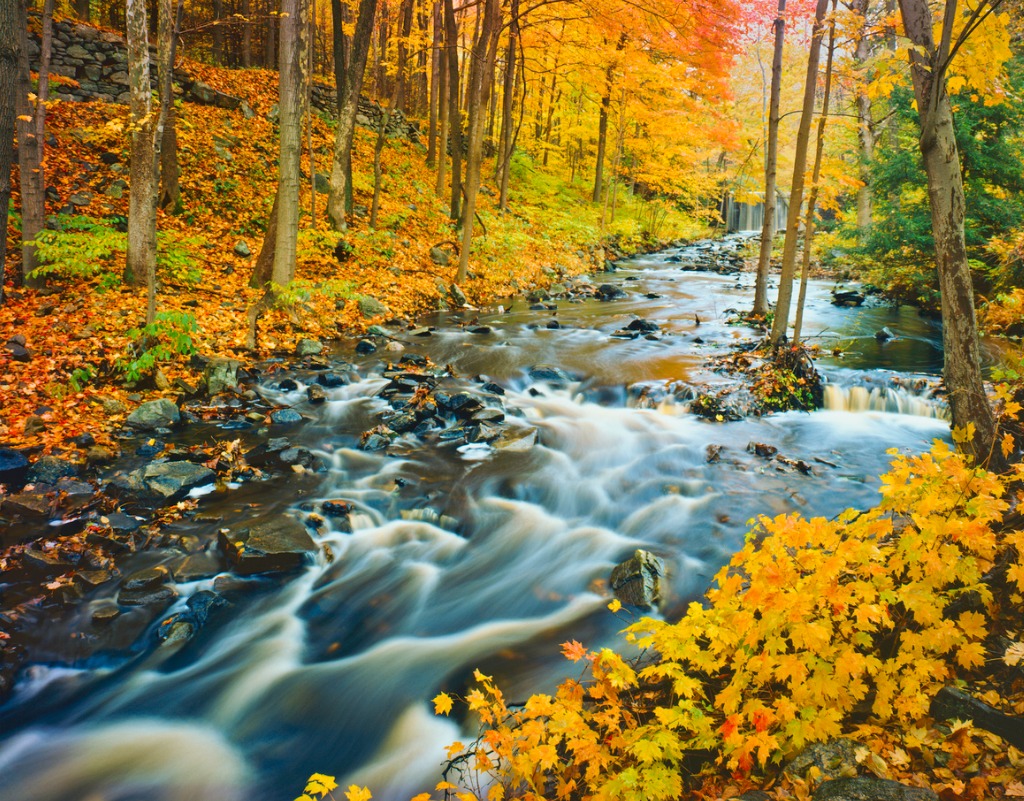 Image Credit: Ron_Thomas via iStock
Image Credit: Ron_Thomas via iStock
Naturally, the specific camera settings you use will be dependent upon the specific conditions in which you're shooting.
However, there are a few settings that you can pre-determine no matter what the weather, lighting, or the scene you're photographing.
Exposure Mode
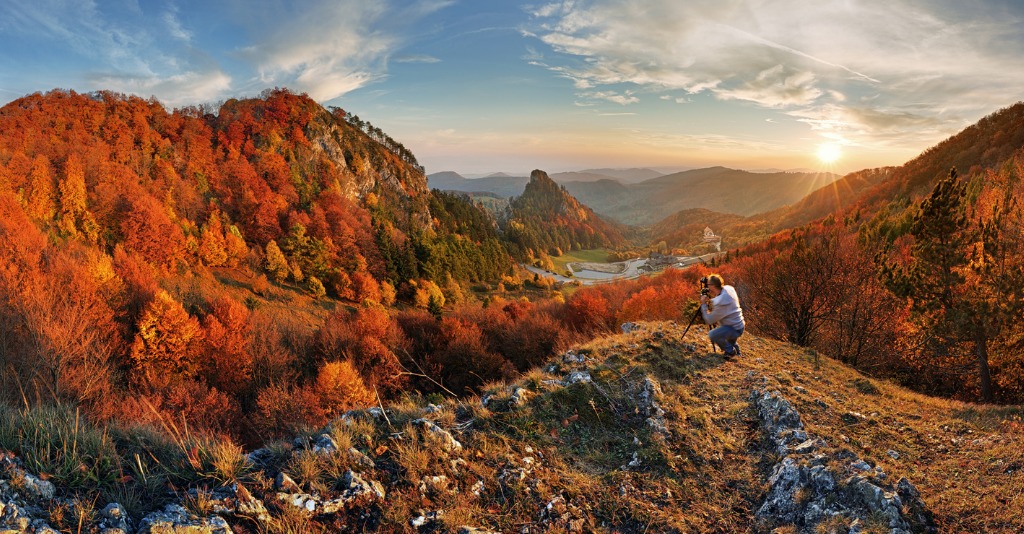 Image Credit: TomasSereda via iStock
Image Credit: TomasSereda via iStock
In many situations, shooting in aperture priority mode will get you the best results.
Aperture priority mode gives you control over the camera's aperture and ISO, while the camera retains control over the shutter speed in order to get a good exposure.
One of the factors that determines depth of field is aperture, so manipulating the aperture value while shooting in aperture priority mode allows you to determine how much of the scene is in focus.
Traditionally, a large depth of field is preferable for landscape photos, and so a mid-range aperture like f/8 or f/11 is often a good place to start.
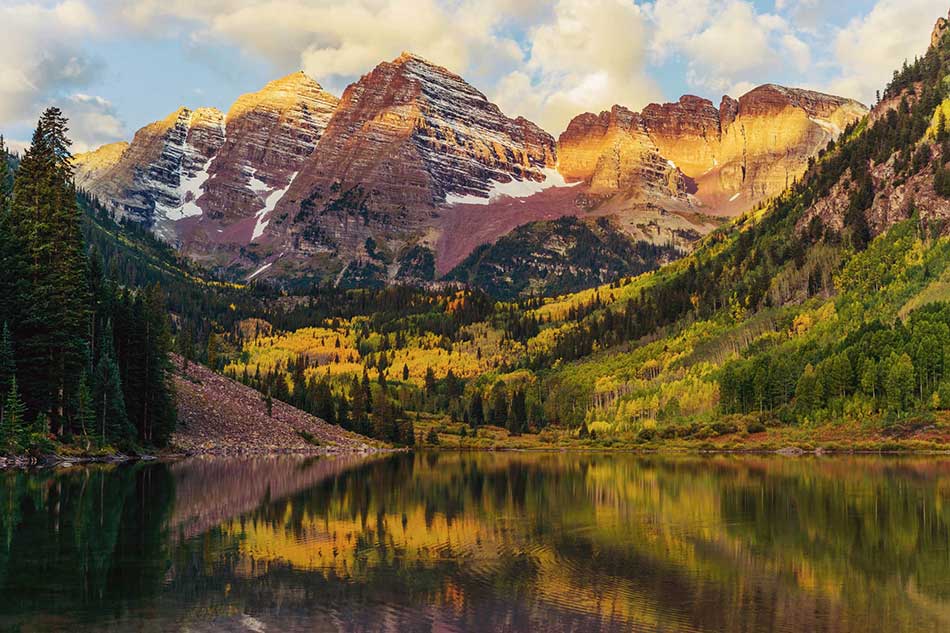
But don't discount the value of taking a close-up of a nice detail - a single leaf, perhaps - and blurring the background by using a much larger aperture, like f/2.
Either way, in aperture priority mode, you can set the aperture and not worry about the shutter speed which makes it a little easier to get good exposures.
Bonus Tip: If you want to create an image with motion blur, such as blurring the movement of water, shoot in shutter priority mode.
White Balance
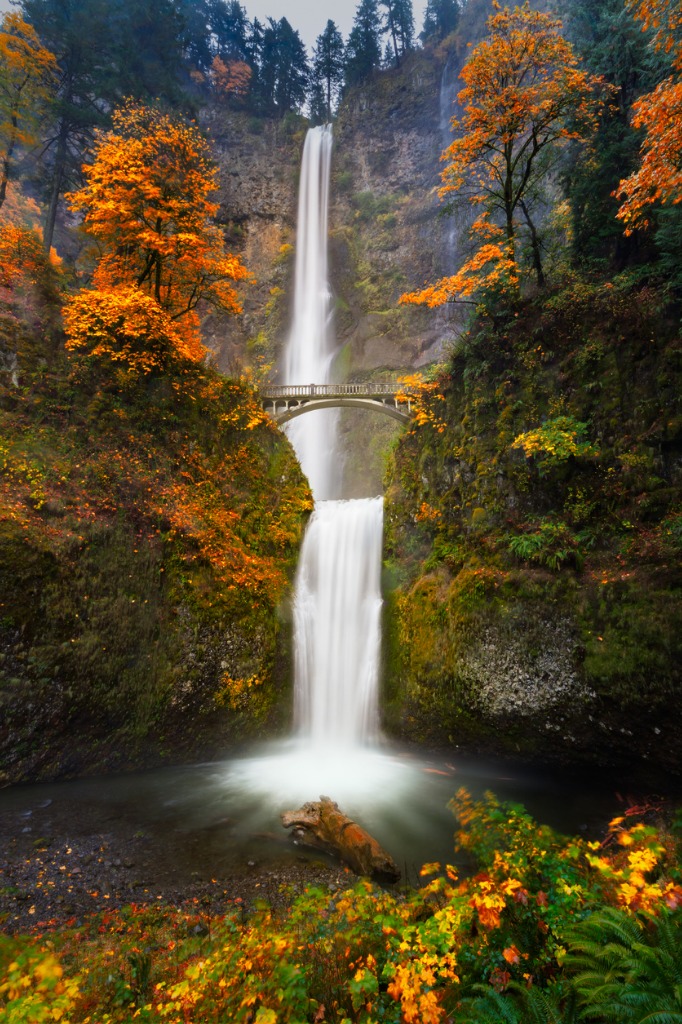 Image Credit: freebilly via iStock
Image Credit: freebilly via iStock
When shooting fall foliage, you want to retain all of the beautiful colors of the leaves, so choosing the correct white balance is critical.
If, for example, you're shooting during golden hour, often the best white balance setting is Daylight.
The Daylight mode will protect the beautiful golden tones of the light while also protecting the warm glow of the landscape, including the leaves.
If you're shooting at other times of day, it's best to experiment with different white balance settings to determine which one is best for that specific situation.
You can always tweak the white balance in post-processing, so don't worry too much about making a mistake!
Exposure Levels
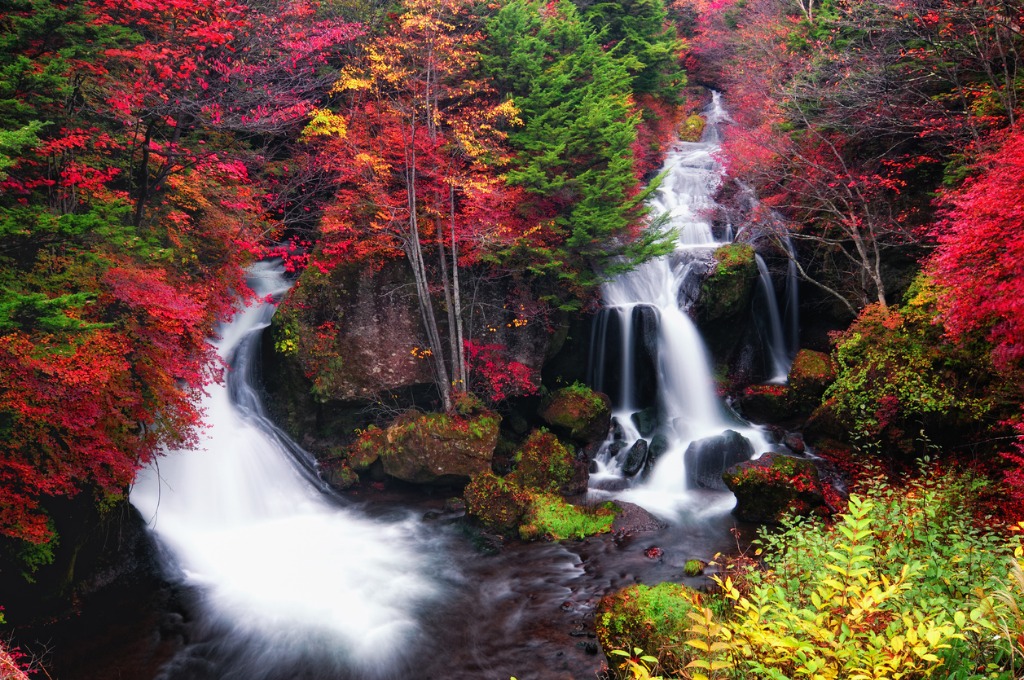 Image Credit: Juergen Sack via iStock
Image Credit: Juergen Sack via iStock
To bring out the tones of the various colors of leaves and give them a little more color depth, err on the side of underexposure.
You can underexpose the image in a number of ways, including changing the aperture, shutter speed, and/or ISO.
However, the easiest way to underexpose your fall foliage images is to utilize your camera's exposure compensation feature.
Many cameras have a dedicated exposure compensation button (+/-) that make it simple to dial in underexposure.
Just press the minus button to dial in negative exposure compensation of -0.5EV or perhaps -1EV and watch the tones in the shot become deeper and richer.
Composition Techniques for Fall Foliage Photography
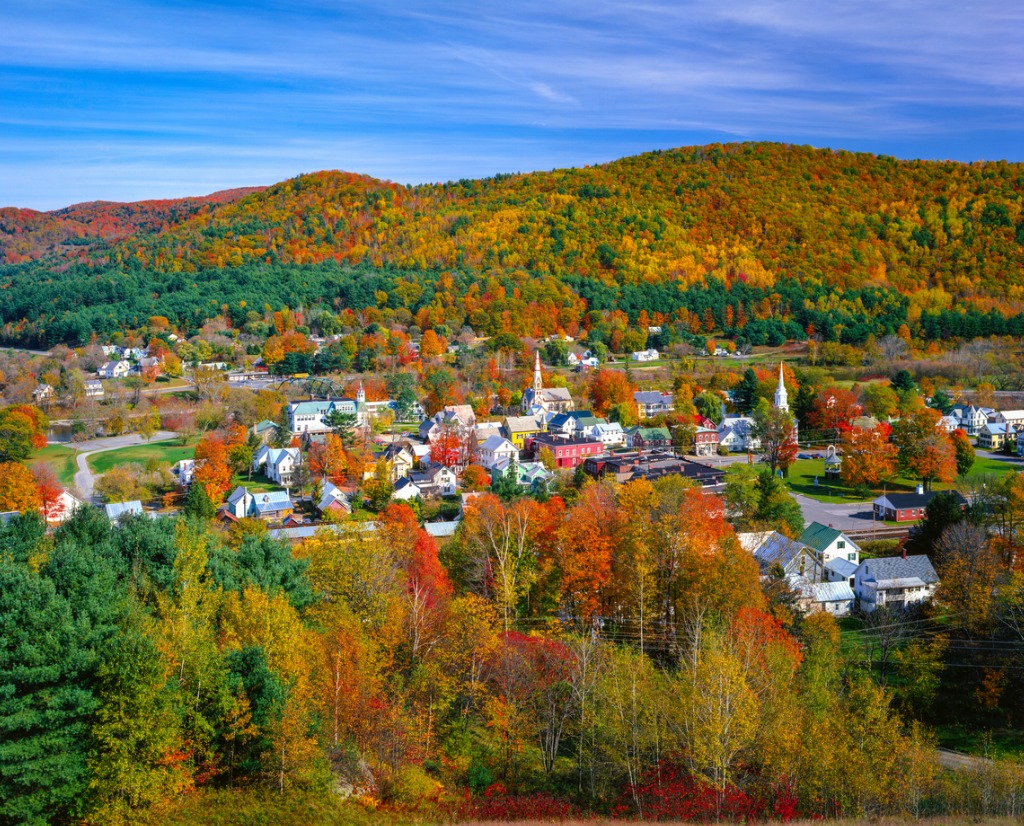 Image Credit: Ron_Thomas via iStock
Image Credit: Ron_Thomas via iStock
In many cases, when you look at images of fall colors, they look like the one above - a wide view of an autumn that gives viewers an eyeful of color.
And while there is nothing wrong with these wide-angle views, it's a mistake to discount alternative types of compositions.
Here are a couple of my favorite unique fall color compositions:
Look Straight Up
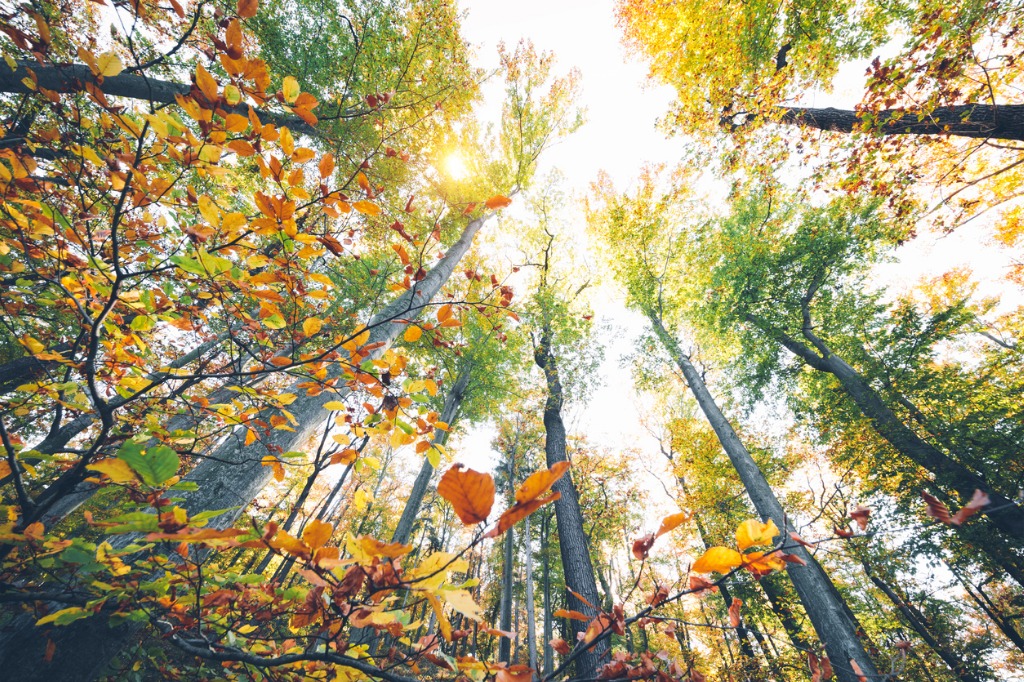 Image Credit: borchee via iStock
Image Credit: borchee via iStock
A great way to alter the perspective of your fall foliage images is to shoot straight upward.
Doing so offers a much different view than is typical, which makes it immediately more eye-catching.
But this technique also emphasizes the height of the trees, which can often feel more grand in the shot.
Besides, with a deep, rich, blue sky as the background, you can frame up a shot with some truly beautiful contrast between the sky and the leaves!
Isolate a Subject
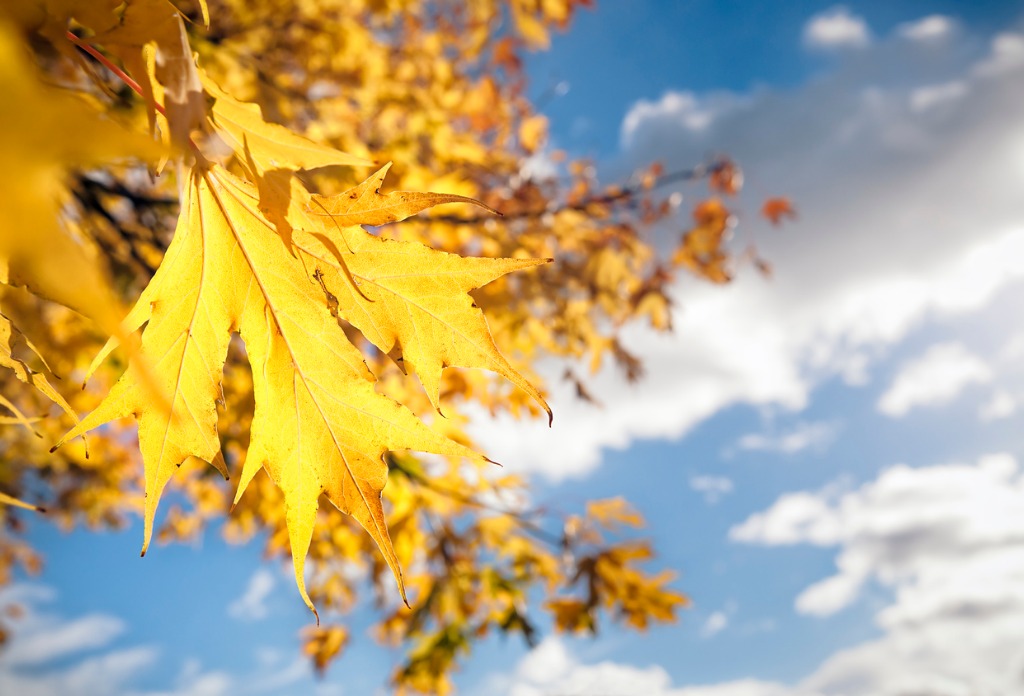 Image Credit: georgeclerk via iStock
Image Credit: georgeclerk via iStock
Another favorite composition I like to use for fall color photography is to isolate a small subject in the frame.
You can focus on a single branch of a tree, a single leaf or a group of leaves, or even leaves that have already fallen on the ground.
No matter what the subject is, find ways to help it stand out in the image. You can do that by using a large aperture to narrow the depth of field or perhaps altering your perspective such that the subject and the background have nice contrast of color or light.
Isolating a subject in this manner is easiest with a longer focal length lens, but if you don't have a long lens at your disposal, simply zoom with your feet, get close to the subject, and fill the frame with it. The results can be quite incredible, like Peter Lik's breathtaking shot of fall color reflections that sold for a cool $1 million.
Subjects for Fall Foliage Photos
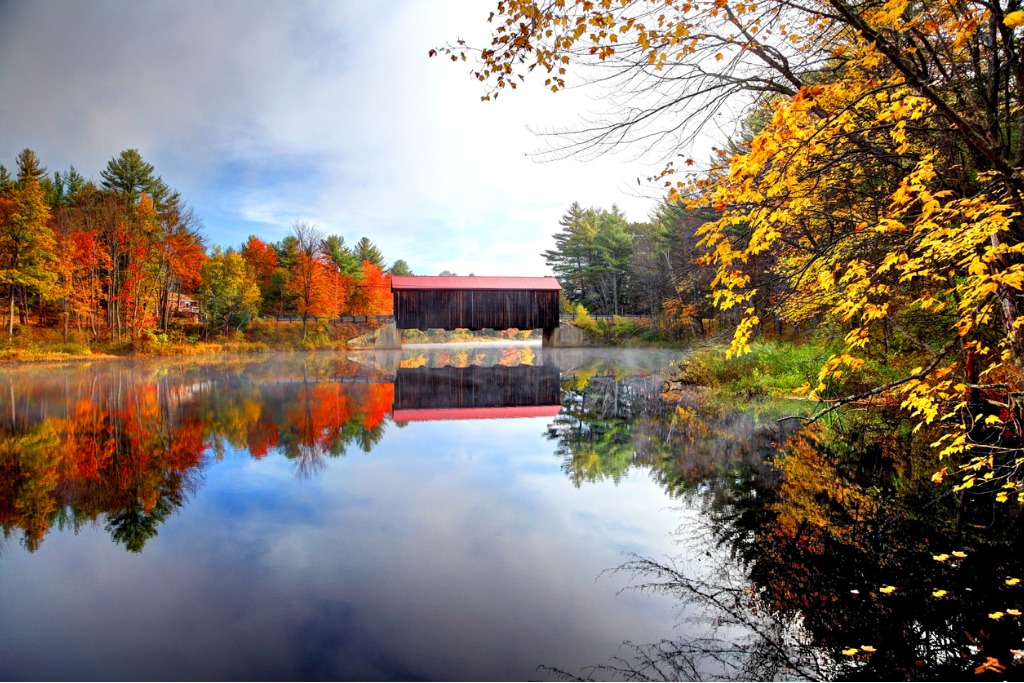 Image Credit: DenisTangneyJr via iStock
Image Credit: DenisTangneyJr via iStock
Obviously, your fall colors photos will need to have a healthy dose of trees in them. But images of nothing but trees - even if they are covered in gorgeously colored leaves - can be a bit on the boring side.
Instead, try to complement the colors of the leaves with another strong subject in the shot.
In the image above, the covered bridge certainly serves that purpose. The red color of the roof works nicely with the autumn colors in the shot while the linear structure of the bridge is an interesting visual addition to the photo.
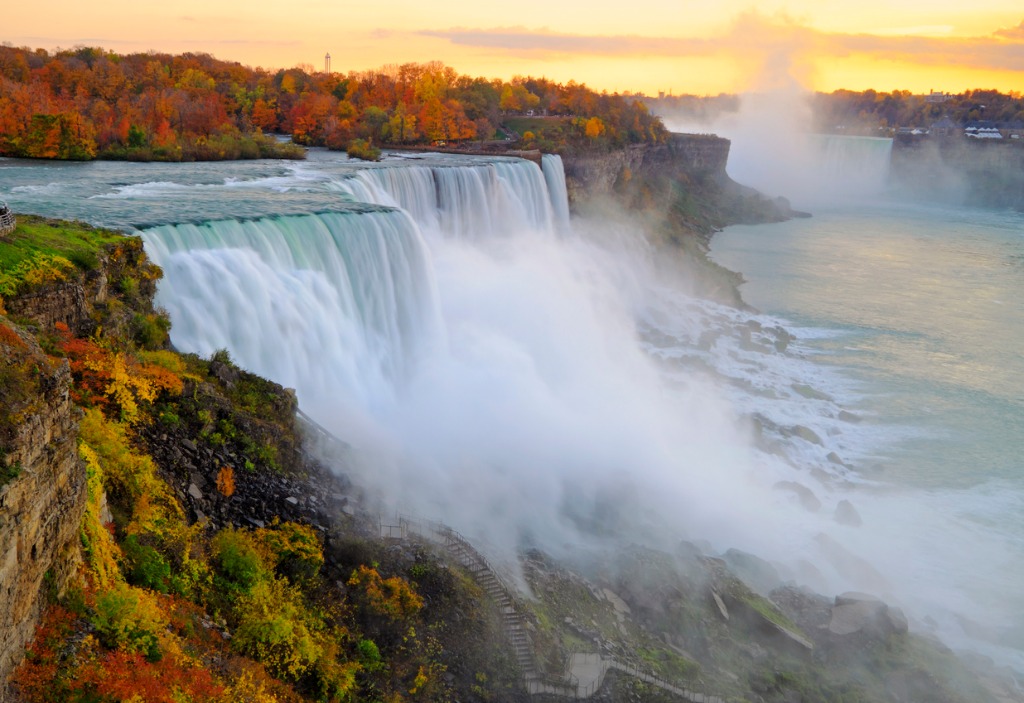 Image Credit: Orchidpoet via iStock
Image Credit: Orchidpoet via iStock
Waterfalls are another prime target for fall photography, especially if you slow the shutter down to blur the movement of the water.
The combination of the dreamy, blurry water and brightly colored leaves covering the ground can be breathtaking.
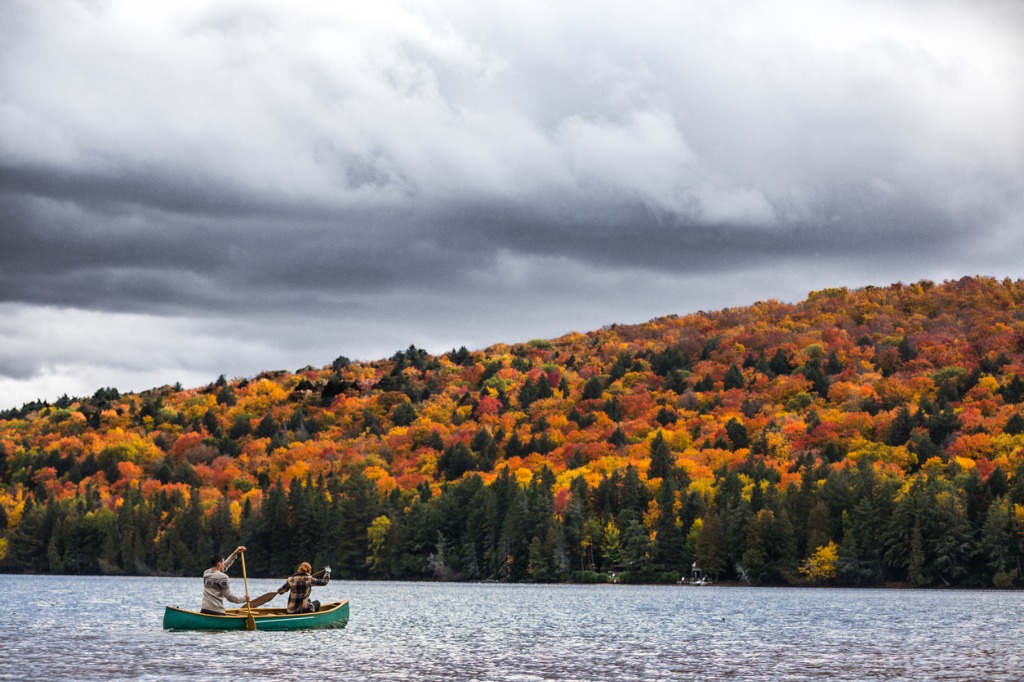 Image Credit: Leonardo Patrizi via iStock
Image Credit: Leonardo Patrizi via iStock
Heck, even adding people to your landscape photos of fall colors can have a positive impact on the overall look and feel of the image.
As you can see above, the addition of people to the shot gives our eyes a place to start inspecting the photo. What's more, when we see people in a photo like this, it's easier for us to imagine ourselves in that place enjoying the beauty of fall.
Final Thoughts
Many photographers can't wait for fall to arrive because of the wealth of opportunities there are to capture incredible photos.
By using the tips outlined here, you will be in a better position to get more impactful photos, and more of them as well.
Before you get started on your fall foliage photography adventure, check out the video above by Nigel Danson.
Nigel offers excellent tips for planning and preparing for an autumn color photo shoot. Your success is often determined by how you plan, so it's well worth a few minutes to learn how to get ready to photograph fall colors!
This blog post about the topic "Learn How to Photograph Fall Foliage" was first published on our website here https://www.photographytalk.com/landscape-photography/8936-learn-how-to-photograph-fall-foliage